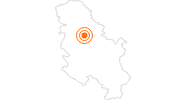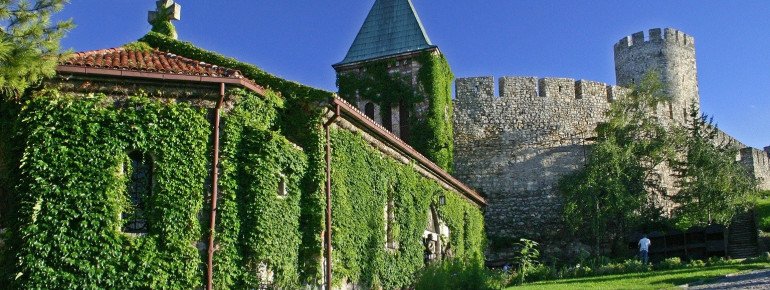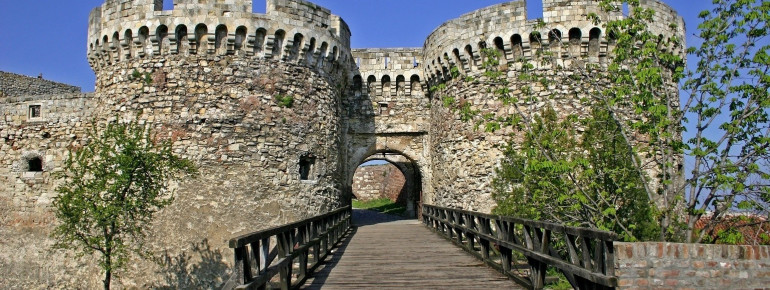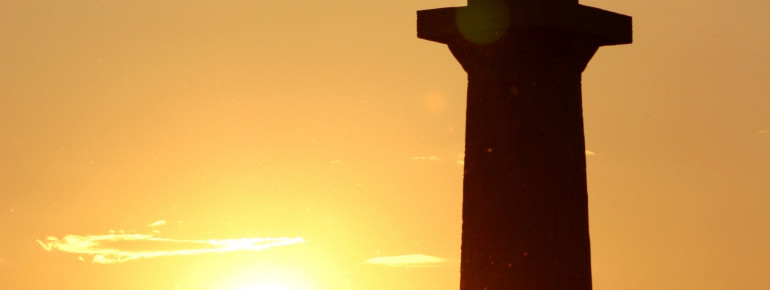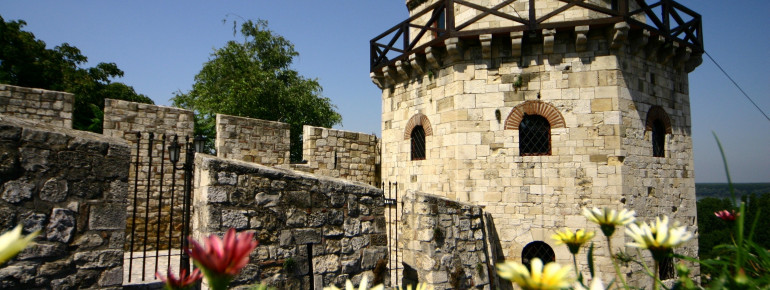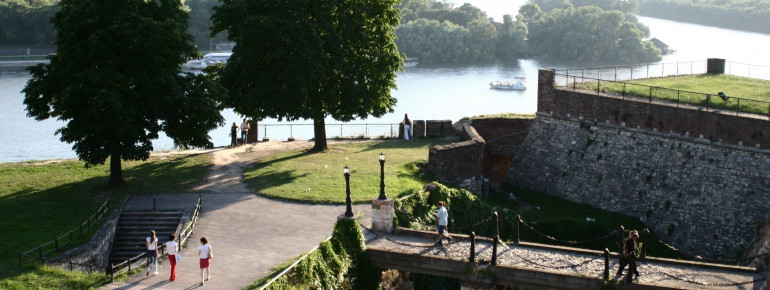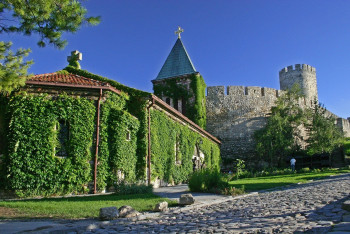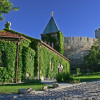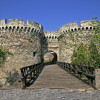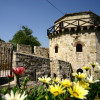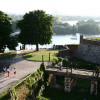Contents
Description
The Belgrade Fortress was built during the 2nd and 18th century as a protective structure on a hill overlooking the union of the two rivers Sava and Danube. Today the castle serves as a unique museum of the history of Belgrade. The complex consists of the Belgrade Fortress, divided into the Upper Town Gornji and the Lower Town Donji Grad, as well as the Kalemegdan Park.
Construction
It was strategically important to build this fortification – a Roman castrum – here in the 2nd century AD to create a long-lasting military camp for the Fourth Flavian Legion. After having been groundlessly demolished by the Goths and the Huns, the fortress had been rebuilt in the first decades of the 6th century. Less than one century later it was wiped out again completely by the Avars and the Slavs.
Surrounding the castle on this elevation over the union of the Sava and Danube rivers, the ancient settlement of Singidunum was established, which later became Slavic Belgrade. The Belgrade Fortress has been demolished and rebuilt numerous times, as above the Roman walls stood Serbian fortresses and above those the Turkish and the Austrian fortresses. In the 12th century a new castle was erected on the Roman ruins under the Byzantine Emperor Manuel I Comnenus. During the first decades of the 14th century this small fortress on the hill-top was extended as far as the river banks.
Change of shape over time
Under the reign of byzantine emperor Stefan Lazarević, Belgrade became the new capital of Serbia, reinforced by the huge fortifications to the Upper and Lower town. An advanced medieval city developed as the emperor's palace was set up in the old castle, and a military harbour was added on the Sava river. Then, with the Austro-Turkish war, a new era began. As a key fortification at the heart of the armed conflicts of the 18th century, the castle was rebuilt three times.
Under the Austrian occupation from 1717 to 1739, and after constructing new modern fortifications, the Belgrade fortress was one of the most powerful military defense places in Europe. It was built according to plans drawn up by Swiss Colonel Nicolas Doxat de Démoret, who served in the Austrian army. Before the Turks returned to Belgrade in 1740 all the newly constructed fortifications were extinguished. By the end of the 18th century the Belgrade Fortress had taken on its final form.
Kalemegdan
Kalemegdan is today Belgrade’s most beautiful and largest park. During the time when the fortress was Belgrade’s main military stronghold, it was used to observe and await the enemy in battle. Consequently, the name Kalemegdan derives from the two Turkish words 'kale' meaning ‘fort’ and 'meydan' meaning ‘square’ or ‘field’. The Turks also called Kalemegdan 'Fikir-bayır' meaning ‘hill for contemplation’.
In Kalemegdan you can find the key parts of the Belgrade Fortress memorial: the Monument of Gratitude to France, the Cvijeta Zuzorić Art Pavilion, the Music Pavilion, the Great Steps (Veliko Stepenište), the zoo, a children’s fun fair, and a number of other monuments, sculptures, sports facilities, restaurants and cafés.
Belgrade Fortress is today a cultural property of great importance, and a venue for frequent cultural, artistic and entertainment events.
Historical Information
Origin of the round fortress
Several Celtic tribes recognized the advantages of the elevation in the middle of the city during the 3rd century BC and thus laid the foundation for today's fortress in Belgrade. Due to its characteristic outer shape, the Romans named the building “Singidunum” in the first century, referring to the fortification as the “round fortress” or “round city.” Under the rule of the Byzantine Empire, the fortress lost some of its original size, but was equipped with stronger defensive walls and was thus better protected against attacks.
Upper and Lower Town
Although the building had already undergone an enormous upgrade, this was not to be the highlight, because under the Serbian despot Stefan Lazarević, the dimensions of today's Upper and Lower Town were created. This resulted in expansive and sometimes pompous buildings such as Lazarević's castle, who wanted to establish the headquarters of his empire here. For this reason, he also expanded the harbor with a number of military installations, so that under the despot, the fortress of Belgrade attained the enormous size for which it is still known today.
Always important, even in times of war
But it wasn't just in the Middle Ages that the fortress played an important role. During the Austrian-Turkish War in particular, it was considered an extremely resilient stronghold for the enemy. Although it had to be rebuilt three times during this period, it nevertheless retained its importance. During the Austrian occupation from 1717 to 1739, the fortress was one of the most important military hubs in Europe, thanks in no small part to the designs of officer Nicolas Doxat de Démoret. Unfortunately, these were destroyed shortly before the return of the Turks, so that the current form of the Belgrade Fortress did not emerge until the end of the 18th century.
How to get there
By car
From Romania
If you are coming from the east and want to drive to Belgrade, it is best to take the DN59. Follow this road until you reach the Dunărea and cross it to get to the city center. Stay on the road and you will reach Kralja Petra, where the fortress is located.
From Croatia
Coming from the west, take the A3 to reach the border with Serbia. The road then becomes the E70, which you follow to the city center of Belgrade. Here you will find the fortress at Kralja Petra.
From Hungary
If you are arriving from the north, it is best to stay on the E75, which will take you directly to the center of Belgrade. Here you will reach the fortress at Kralja Petra and have thus reached your destination.
By public transport
If you are already in Belgrade, the best way to get around the city is by tram or the central bus lines.
By plane
Nikola Tesla Airport is located about 18 km outside Belgrade and flies to most major European cities, so you can reach the capital even from more distant locations.
